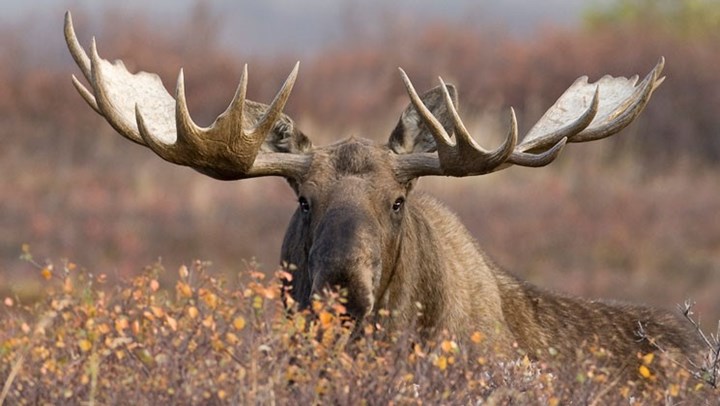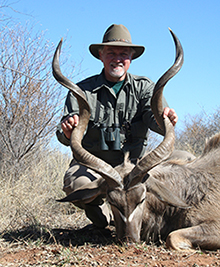
by Chris Chaffin - Wednesday, December 21, 2016

I had an elk tag in my pocket that fall as I left town, heading for a promising location on public land. Harvest reports and annual survey data, along with a conversation with the local conservation officer, led me to believe I had a good chance of finding elk there.
Hunting access on public lands is certainly one of blessings of freedom enjoyed in America. In the western United States, especially, the vast acreage provides opportunity to hunt legal quarry of every description: big game, small game and upland birds, waterfowl, predators and varmints.
This ready access to hunting opportunities is and has been a vital component in passing down our hunting heritage from one generation to the next, and in opening the doors for newcomers to connect with nature and hunting.
Currently, of great concern, however, is a movement by some western government officials and other parties to shift ownership of federally-managed lands to state ownership and control. The fear, among those who oppose this proposed change, is that states would sell the land and associated resources to bolster sagging state coffers. Contending that the states would be unable to maintain the resources and end up selling it to private entities, the change would ultimately result in hunters and the public being denied access. To learn more click here or here.
It would be most interesting to know how many of today’s hunters owe their sense of conservation ethics and resource stewardship to experiences made possible by the availability of public lands. Experience suggests that percentage would be high.
In a hunter’s life, experiences with nature—and specifically wildlife—make the connections that internalize our respect and commitment to the outdoors. Some interactions with nature are more profound than others.
I set up a solo camp in a small, deserted Forest Service campground in southeastern Idaho, near Gray’s Lake National Wildlife Refuge in the Caribou-Targhee National Forest. I finally had a few days off work and looked forward to hunting and exploring this new area with such a rich tradition of deer, elk, moose and grouse. I was an elk-hunting rookie, with decent deer hunting experience and a pretty good working knowledge of wildlife. I was excited.
Daylight found me at the mouth of a large draw, just outside the campground, leading a twisted path into higher ground. It was cool but there was no snow in this early season. The aspen were beginning to turn golden-yellow but evergreens dominated the area. I was confident the elk would be up high and I planned to go slow to learn the area and see if the forest would give up any of its secrets.
The draw was fairly steep and narrow, so I picked a path on the side that provided the quietest route. The hillsides on both my right and left ran at angles that kept the draw in almost complete shade.
Several hours passed without anything exciting, except the sights and smells of a new piece of mountain country. In the distance, I could hear Sandhill cranes trumpeting as they gathered at Grey’s Lake, a staging area for their annual migration.
I stopped, leaning against a tree, to listen. It had been quiet for a long time, nothing but a few birds flitting among the trees. As my breath slowed, I heard it. Behind me, lower in the draw I had traipsed through came the distinct sound of antler or possibly a hoof, knocking against wood, wood that sounded like deadfall with the slightly hollow sound that was clearly different than a living tree. My senses jumped up a notch as I listened for confirmation that some critter was in the draw with me.
I waited. It was still ... and quiet.
Not hearing any further sounds, I slowly moved higher in the draw, stopping frequently to listen. Then the same clunk of bone on wood resonated from below me. I found some concealment on the high side of a substantial tree and waited.
Ten, 15 minutes of silence. I carefully continued my climb.
I came upon a “textbook” wallow. Just 4 to 5 feet in diameter, the color of coffee with too much creamer and surrounded by tracks in the mud. As if a novel writer was scripting the scene, the clunk broke the silence again; only this time, it was definitely closer. Close enough that I searched for a place to hide with a view of the wallow.
I found a near-perfect pocket of brush on the north-facing hillside, but the only problem was that it was only 10 yards from the water. The area around the wallow was open so this was my only quick option. I crawled into the brush.
Over the next few minutes I heard the approaching muffled clunks several times. I envisioned a lone bull elk coming to the wallow for a cooling mud bath, at ease as he wandered casually in the shady draw. But I was in for a surprise.
The clunks and lower elevation were to my right as I sat facing the muddy hole. I slowed my breathing, got comfortable with my Browning BAR across my lap. I made a conscious effort to move only my eyes.
It was complete surprise when my peripheral vision on the left side—the side uphill from me—caught movement. My head turned slowly left and I was eyeball-to-eyeball, mere yards, with a young bull moose. "The connection with nature was real—and personal. My experience with the day's moose is a very meaningful part of why I am a hunter-conservationist."
We stared at each other, maybe both in a state of disbelief, as I realized he likely circled the wallow to get upwind. He clearly didn’t know I was there until I moved to look at him. Or, maybe he did…and was simply unconcerned.
My mind is now racing through what-do-I-do-now scenarios. And that was when I heard another clunk below me. I had a dilemma. It could be an elk approaching the wallow.
I made what seemed like a reasonable decision. I picked up a twig and threw it at the moose, whispering, “Go away!” for emphasis. He immediately swirled 180 degrees, his front legs airborne. And faster than I could believe, as his front legs hit the dirt, he did a reverse 180 and was back where he started and our eyes were again locked.
I know moose can be dangerous. I chambered a round.
Still holding out hope for an elk, I watched his body language. He seemed calm as he just stood there looking at me.
My next attempt to shoo him away was to take my hunter-orange cap off, wave it at him and vocalize my desire for him to leave. His response was to repeat—exactly—his double pivot move. We had a Mexican standoff.
I gave the situation a minute and tried the hat trick again. This time, however, when he landed facing me again his head lowered a bit. Another brief standoff and he took a step back and moved warily to the far side of the wallow 8 or 9 yards away.
He stepped to the edge of the water and lowered his head, and I saw his ears fold back. The new posture registered with what I knew about moose behavior. When he hoofed the ground I knew it was time to let him have the wallow.
Without taking my eyes off him, I inched up to my knees, then to my feet and backed out of the brush away from him and the wallow. He never took his eyes off me, standing his ground.
I made a wide circle around him, up an intermittent ridge and to the top of draw, breathing a sigh of relief yet was also filled with awe at the close encounter, the one-on-one connection with such a magnificent and powerful animal. Until you get close to one in the wild, I’m not sure you can appreciate how big they are.
An exposed ridgeline provided a perfect spot to sit, break out the Thermos and enjoy the gorgeous fall weather. Then, looking for new ground to cover, I hiked the ridgeline until I found a draw leading back toward camp.
I was halfway down the mountain when I came to a clearing about 20 yards across, a clear-cut pocket recently cut. I started to cross the clearing, then halfway into the opening I stopped short. At the edge of the clearing was a young moose calf. I was thrilled to see it that close but then noticed it was staring intently, directly across the clearing to the other side. I followed its gaze and watched mom moose step out of the aspen, looking at me like I was the schoolyard bully who was picking on her kid.
After a flashing thought that questioned, “What the heck is going on with me and these moose today?” I again slowly backed away from what could have been a hairy situation, noting the calf hadn’t moved a step the whole time.
The rest of the trip back to camp was uneventful but filled with memories that to this day—some 30 years later—are as fresh as if they happened last year.
As I sat next to the campfire that evening, I reflected on the vivid lessons in animal behavior I had received and embraced a new level of knowledge and self-assurance. The connection with nature was real—and personal.
My experience with the day's moose is a very meaningful part of why I am a hunter-conservationist. Access to the big game habitat via the public land in southeast Idaho, the scientifically-based management of wildlife there and our freedom to hunt made it all possible.
For those who understand the value of these lessons and the role hunting plays in sustaining both wildlife and our hunting heritage, the necessity of maintaining quality public lands and access to them is unquestioned.
Merry Christ-moose!
■ ■ ■
About the Author
Chris Chaffin has been an outdoor communicator, educator and partnership manager for more than 40 years. He has worked on the national scene representing several prominent components of the outdoor community promoting hunting, fishing, the shooting sports and conservation. He served two terms as Treasurer for the Professional Outdoor Media Association (POMA), eventually taking on roles as vice-president, President and Chairman of the Board.

In 2007, he launched Chaffin Communications, Inc., a communications consulting company focusing on the outdoors. In 2012, with support from the Outdoor Adventure Dream Giveaway, Chaffin founded and currently manages the Outdoor Adventure Conservation Fund, a Florida non-profit established to encourage and facilitate more people participating in traditional outdoor activities. For more information, click here.
E-mail your comments/questions about this site to:
[email protected]
Proudly supported by The NRA Foundation and Friends of NRA fundraising.
